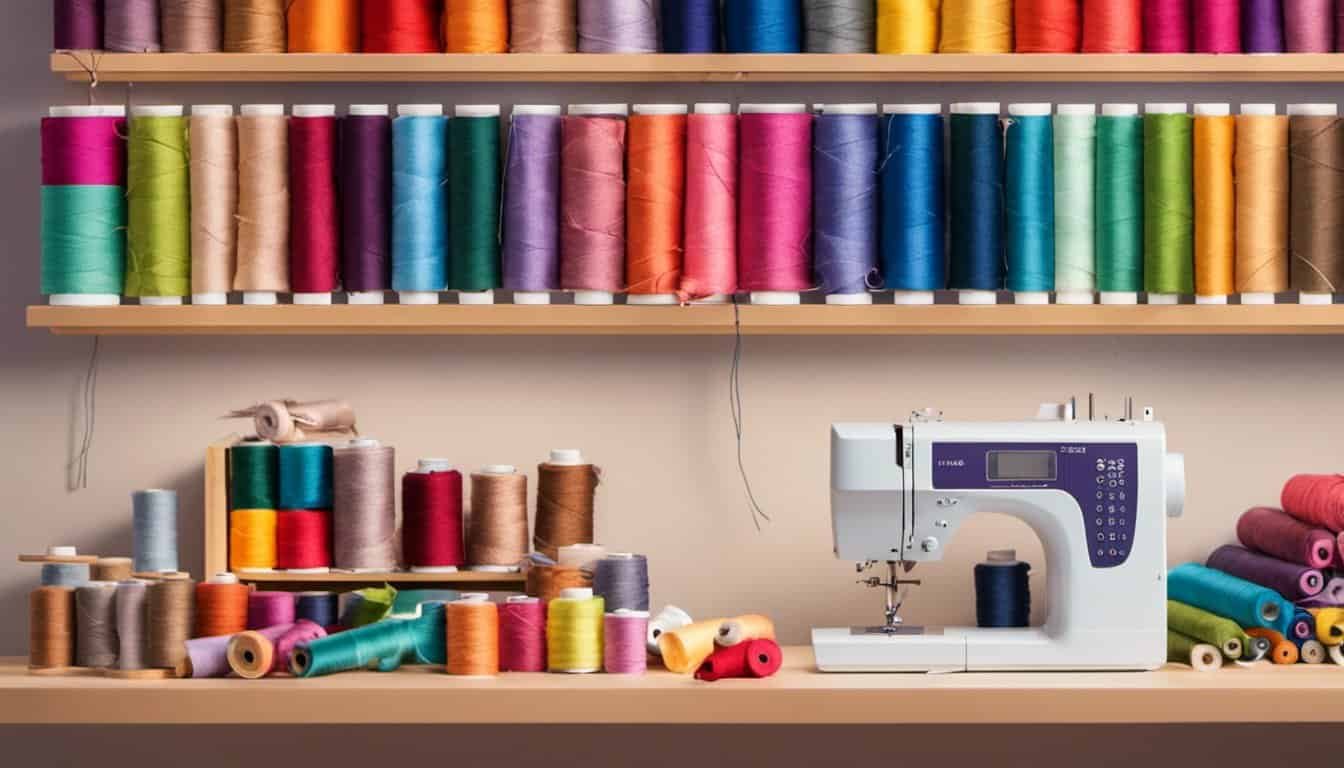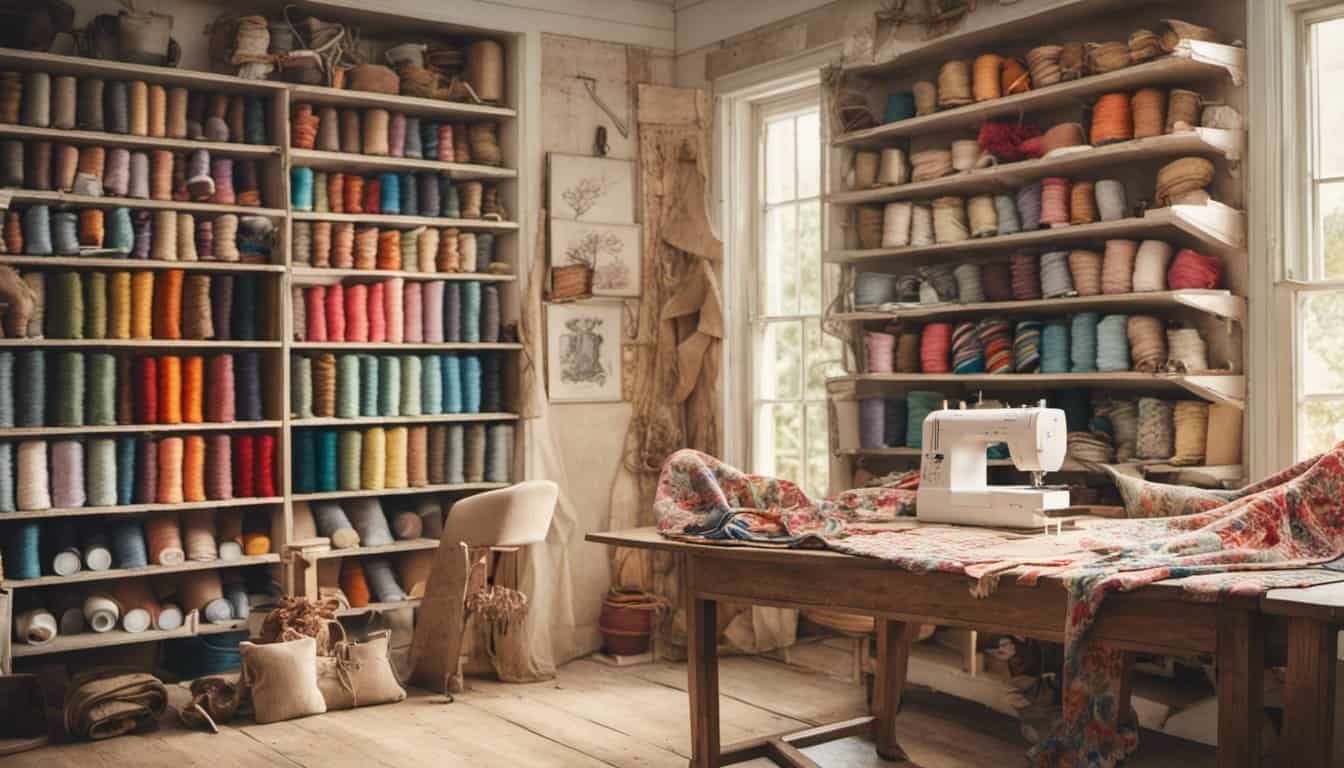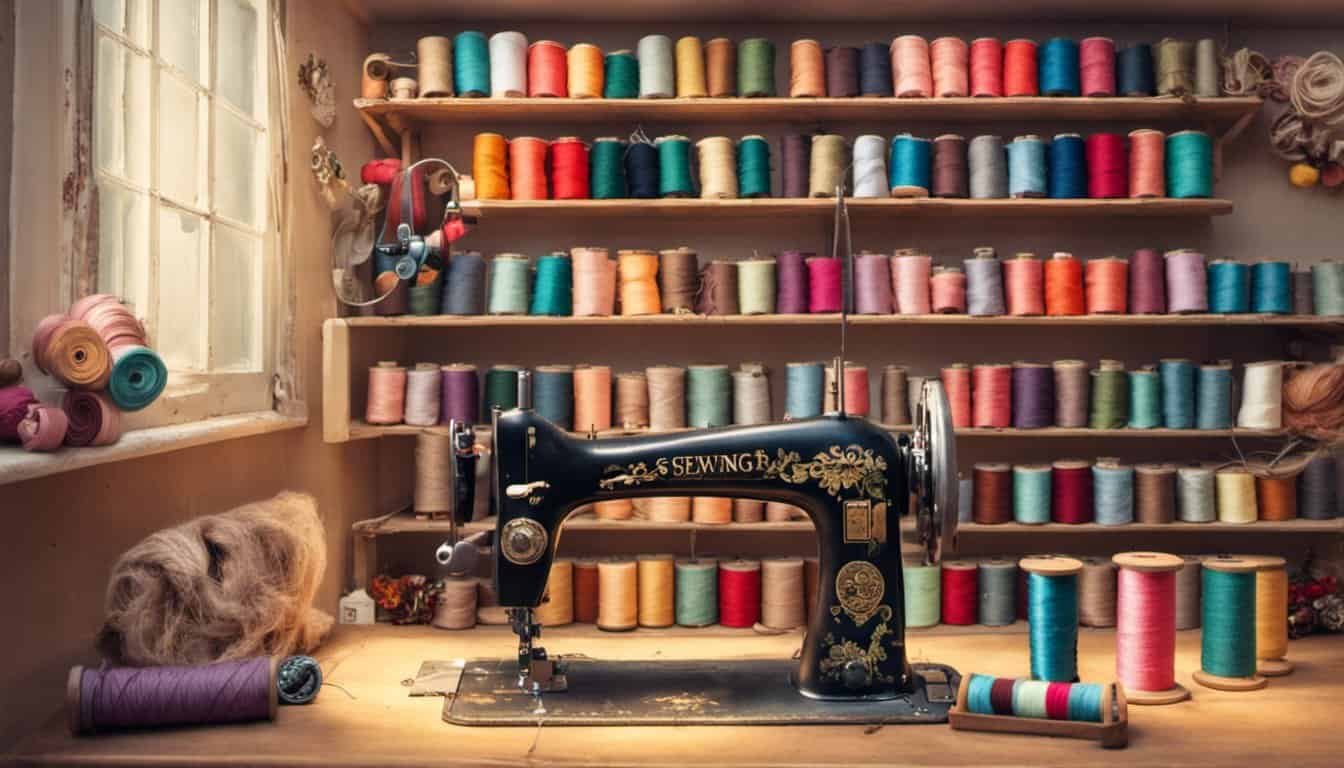Are you looking for some fresh sewing ideas for your cotton fabric? Look no further! In this article, we’ve got you covered with a variety of creative projects that will inspire you to make the most out of your cotton fabric stash. Whether you’re a beginner or an experienced sewist, these ideas will help you create beautiful and functional items that you’ll love.
From cozy pajama pants to stylish tote bags, there are endless possibilities when it comes to sewing with cotton fabric. In this article, we’ll explore different projects that are perfect for showcasing the versatility of this fabric. Whether you prefer bold prints or classic solids, cotton fabric is a great choice for its comfort, durability, and ease of sewing. Get ready to unleash your creativity and transform your cotton fabric into fabulous handmade items!
Choosing the Right Cotton Fabric
When it comes to sewing, choosing the right fabric is essential, and cotton is a fantastic option for many projects. With its soft and breathable qualities, it’s no wonder that cotton is a popular choice among sewists, whether you’re making clothing, home decor items, or accessories. Here are some tips to help you select the perfect cotton fabric for your next sewing project:
Consider the Weight: Cotton fabric comes in various weights, from lightweight voile to medium-weight quilting cotton to heavyweight denim. Think about the requirements of your project and choose a fabric that will provide the right structure and drape. Lighter cotton is great for summer garments, while heavier cotton works well for bags, pillows, and jackets.
Check the Thread Count: Thread count refers to the number of threads per square inch of fabric. A higher thread count signifies a finer and more durable fabric. Look for cotton fabrics with a thread count of at least 200 for a more luxurious feel and long-lasting results.
Feel the Fabric: Visit a fabric store or order swatches online to get a feel for different cotton fabrics. Touch the fabric to check its softness and texture. This hands-on approach will help you make an informed decision about which fabric will be most suitable for your project.
Consider the Print or Pattern: Cotton fabrics come in a wide array of prints and patterns, from bold florals and geometric designs to whimsical characters and classic stripes. Consider the theme and style of your project, as well as the recipient’s preferences if you’re making a gift. Remember, the fabric print can greatly influence the overall look and appeal of your finished project.
Pre-wash and Shrinkage: Keep in mind that cotton fabric tends to shrink after washing. It’s crucial to pre-wash your cotton fabric before starting your project to avoid any unpleasant surprises later. Washing and drying the fabric as you would with your finished item will eliminate any shrinkage and allow for accurate measurements and sizing.
Essential Tools and Supplies for Sewing with Cotton
When it comes to sewing with cotton fabric, having the right tools and supplies can make all the difference in achieving professional-looking results. Here are some essential items that you should have in your sewing kit:
1. Fabric Scissors
Investing in a good pair of fabric scissors is crucial for cutting cotton fabric with precision. Make sure to keep them dedicated solely to fabric cutting to maintain their sharpness.
2. Pins and Needles
Pins are handy for holding fabric pieces together while sewing, and needles are essential for hand-sewing tasks. Opt for sharp, thin needles when working with cotton fabric to minimize visible needle marks.
3. Seam Ripper
Mistakes can happen, even to the most experienced sewists. A seam ripper will be your best friend when it comes to removing stitches and correcting errors without damaging the fabric.
4. Measuring Tape and Ruler
Accurate measurements are crucial in sewing projects. A measuring tape is handy for taking body measurements or measuring fabric lengths, while a ruler is useful for ensuring precise seam allowances and hems.
5. Thread and Bobbins
Choose a high-quality, all-purpose thread that matches the color and weight of your cotton fabric. Make sure to wind extra bobbins with your chosen thread color to avoid running out in the middle of a project.

6. Sewing Machine
A sewing machine is a valuable tool for efficient and precise stitching. Ensure that your machine is in good working condition and set up with the appropriate needle and thread for cotton fabric.
7. Iron and Ironing Board
Pressing your cotton fabric before and after sewing is essential for achieving professional-looking results. Make sure to have a good quality iron and an ironing board nearby for convenient and effective fabric pressing.
Sewing Projects for Beginners
If you’re a beginner in the world of sewing, cotton fabric is a great material to start with. Its versatility, ease of handling, and wide range of options make it the perfect choice for various sewing projects. Whether you’re interested in making garments, accessories, or home decor items, there are countless possibilities to explore. Here are some sewing ideas to get you started on your cotton fabric journey:
- Tote Bags: Tote bags are not only practical but also a fun and easy sewing project for beginners. With cotton fabric, you can create stylish and functional bags that reflect your personal style. Experiment with different prints, patterns, and colors to add a unique touch to your tote bag.
- Pillow Covers: Give your living space a fresh look by sewing your own pillow covers. Cotton fabric is ideal for making pillow covers as it is breathable and durable. Get creative with different textures and designs to match your decor. You can even add embroidery or applique for an extra touch of personalization.
- Aprons: Want to protect your clothes while cooking or working on crafts? Sewing an apron is a simple yet rewarding project. Cotton fabric is a popular choice for aprons due to its resistance to stains and easy care. Choose a playful print or a classic solid color to make a statement in the kitchen.
- Simple Skirts: A skirt is a versatile wardrobe staple that you can easily make with cotton fabric. Start with a basic A-line or gathered skirt pattern and play around with different lengths and hem finishes. Cotton fabric drapes beautifully, allowing you to create a comfortable and stylish skirt for any occasion.
- Quilts: Although quilting may seem daunting, it’s a fantastic way to showcase your creativity. Cotton fabric is a traditional choice for quilts due to its softness and durability. Start with a simple patchwork design and gradually work your way up to more complex patterns and techniques.
Remember, the key to success when starting out with sewing projects is to take your time, practice, and most importantly, have fun. Don’t be afraid to make mistakes and learn from them. With cotton fabric, the possibilities are endless, and you’ll soon discover the joy of creating beautiful and functional items with your own hands. Happy sewing!
Next, let’s move on to the section titled “Embroidery Ideas with Cotton Fabric.”
Upcycling and Repurposing Ideas
« Unveiling the Secrets: Master the Art of Invisible Stitching and Astonish Others with Your Flawless Craft
Unleash Your Sewing Skills with this Ultimate Sewing Materials List! You Won’t Believe the Results »
If you’re looking for creative ways to put your cotton fabric scraps to good use, why not try upcycling and repurposing? Not only will you be reducing waste, but you’ll also be giving new life to old materials. Here are some exciting ideas to get your creative juices flowing:
1. Patchwork Quilt: Gather your cotton fabric scraps and transform them into a beautiful patchwork quilt. Cut the scraps into different shapes and sizes, and then sew them together to create a unique and colorful design. You’ll not only have a cozy blanket but also a sentimental masterpiece to cherish.
2. Fabric Coasters: Protect your tabletops in style by making fabric coasters out of your cotton scraps. Cut the fabric into small squares or circles, layer them with some batting for extra cushioning, and sew them together. Personalize them with decorative stitches or embroidery for added flair.
3. Cloth Napkins: Save money and reduce waste by making cloth napkins from your cotton fabric. Cut the fabric into squares or rectangles and finish the edges with a simple hem or decorative stitching. Not only will you have a set of eco-friendly napkins, but they’ll also add a touch of elegance to your table setting.
4. Fabric Flowers: Give your space a colorful and unique touch by creating fabric flowers from your cotton scraps. Cut the fabric into petal shapes, stack them together, and secure with a button or bead in the center. Attach them to hair accessories, brooches, or use them for decorative purposes around your home.

5. Patched Denim Jeans: Add a touch of whimsy to your denim jeans by patching them with coordinating cotton fabric. Cut the fabric into fun shapes, such as hearts or stars, and sew them onto worn-out areas of your jeans. It’s a great way to breathe new life into old denim and showcase your creative style.
Remember, upcycling and repurposing is all about repurposing what you already have and getting creative with it. So, grab your cotton fabric scraps and let your imagination run wild. The possibilities are endless, and you’ll be amazed at what you can create with a little bit of time and effort.
Next, let’s explore some dynamic sewing projects for those who want to take their skills to the next level.
Advanced Sewing Techniques for Cotton Fabric
When it comes to sewing with cotton fabric, there are a variety of advanced techniques that can take your projects to the next level. Whether you’re a seasoned sewist or looking to challenge yourself with more complex designs, these techniques will help you achieve professional results with your cotton creations.
1. French Seams: Create a clean and polished finish on the inside of your garments by using French seams. This technique encloses the raw edges of the fabric, giving your sewing project a neat and professional look. French seams are especially useful when working with lightweight cotton or delicate fabrics.

2. Flat-Felled Seams: If you’re sewing cotton fabric for garments or accessories that require extra durability, consider using flat-felled seams. This technique is commonly used in jeans and workwear, as it provides strength and prevents fraying.
3. Bias Binding: Add a pop of color and a touch of elegance by finishing the edges of your cotton projects with bias binding. Bias binding is a strip of fabric cut on the bias, which allows it to stretch and curve smoothly along rounded edges. It can be used to finish the edges of quilts, garments, or home decor items.
4. Decorative Stitches: Elevate the look of your cotton projects by incorporating decorative stitches. Whether it’s intricate embroidery, delicate heirloom stitches, or eye-catching topstitching, decorative stitches add a unique and personalized touch to your creations. Experiment with different thread colors and stitch patterns to create stunning effects.
5. Smocking: Smocking is a technique that gathers fabric by using parallel rows of stitching. It creates a textured and gathered effect, often seen in children’s clothing, blouses, and dresses. With careful measurement and practice, you can achieve beautiful smocking patterns on cotton fabric.
Conclusion
Now that you have learned about choosing the right cotton fabric for your sewing projects, as well as the essential tools and supplies needed, you are well-equipped to embark on your sewing journey. Remember to consider factors such as weight, thread count, texture, and print or pattern when selecting your fabric.

Don’t forget the importance of pre-washing your cotton fabric to avoid any unwanted shrinkage. Taking this step will ensure that your finished project retains its shape and size.
For beginners, there are plenty of simple and fun sewing projects to start with, such as tote bags, pillow covers, aprons, simple skirts, and quilts. Take your time, practice, and enjoy the process of working with cotton fabric. It offers endless possibilities for creating beautiful and functional items.
If you are an experienced sewer, consider trying advanced techniques like French seams, flat-felled seams, bias binding, decorative stitches, and smocking. These techniques will not only give your projects a professional finish but also allow you to add unique touches and personal flair.
So, grab your cotton fabric, gather your tools, and let your creativity soar. Happy sewing!


















